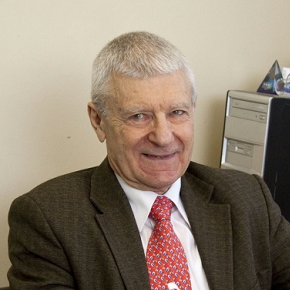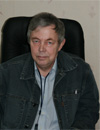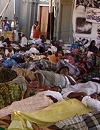 |
||
|
Iran atom: IAEA accuses Iran and retreats RIA Novosti, Konstantin Bogdanov, PUBLISHED November 11, 2011 Iran is being accused of implementing military nuclear programs. Such is the interpretation of the IAEA report on the Iranian nuclear industry, which has gained traction in the last few days. However, this accusation is based on an ambiguous rendering of the document, which has not yet been given the status of an officially published IAEA report. Why now? The report, that was announced long ago and that came with different reservations about its status, began leaking into the press only two days ago. In early October the press began to write about the fact that this report was being prepared, and that it was expected to be tough and uncompromising. Numerous leaks regarding preparations for a military strike against Iran appeared at the same time - beginning with large-scale exercises of U.S. military transport aviation in the Middle East (supposedly covering up the movement of forces) and ending with almost panicked reports that Iran was about to hide all of its nuclear centrifuges in the mountains where they could not be destroyed. It is difficult to understand this escalation of tensions, considering that the IAEA report does not reflect any serious foundation for these apprehensions. The reaction of IAEA officials is especially interesting. It appears that the report, which has already been disseminated on the Internet and has evoked numerous comments from the press and even from officials, will not be officially published at all. IAEA Press and Public Information Officer Giovanni Verlini told The Moscow News that over the next few days, the report will be disseminated only among the delegations of the member-countries and that it will be up to the diplomats to decide whether to pass on its details to the press or not. IAEA experts are not authorized to do this themselves, he explained. In other words, IAEA experts will simply distribute the report among the official delegations as a confidential document and demonstratively limit their involvement in the process to that. This is a peculiar decision on the future of the document that may potentially influence the issues of war and peace in the Middle East. No conclusive evidence has been revealed The report is an expert working document that appears to be unfinished. This is all the more strange because the interested parties had started shaping their attitude towards it almost a month before its publication. As food for thought and a guide to action - in particular further verifications and inquiries - this may be useful. But it can hardly be considered to be evidence of "Iran's guilt," or an excuse for switching to sanctions (not to mention military operations). On the one hand, the report enumerates all sins and suspicions concerning Iran going back almost to the 1990s. This fact has already prompted Tehran to call the report a compilation of stale accusations that are politically loaded under U.S. pressure and not supported by new facts. On the other hand, the report cites new results of inspections of nuclear facilities (conducted in the last two years), which point to a considerable increase in the production of 20%-enriched uranium (which Iran has declared to be fuel for reactors involved in its domestic nuclear program). However, this evidence is indirect - nobody has caught Tehran red-handed in the act of producing weapons-grade uranium. This follows from the report's clearly-worded conclusions, which point out that the operation of these plants does not contradict the information that Iran has officially provided to IAEA upon its request. The report has supplemented this eclecticism through a lengthy discourse about Iran's interest in creating sophisticated systems that can ensure synchronous detonation of a nuclear charge. In this context The Washingrton Post mentions Vyacheslav Danilenko, an expert on the physics of explosion from the former Soviet Union. The IAEA report does not mention Danilenko by name, but an appendix to the report contains numerous hints about a certain person involved in the explosive production of microdiamonds. There are references to "a foreign expert" who worked "in the nuclear weapons program of the country of his origin" and ostensibly consulted Tehran on the slippery issues of its nuclear project from 1996 to 2002. According to The Guardian, Danilenko indeed worked for the Czech Nanogroup that was involved in the explosive production of microdiamonds. Citing IAEA intelligence information, The Washington Post maintains that the report is referring to Danilenko. No other meaningful information on this episode is mentioned either in official documents or media inquiries. Tehran's alleged involvement in military nuclear work during this period needs to be thoroughly investigated if there are well-justified suspicions. But does IAEA have any other documented evidence that is not rooted in antiquity? And just what are you doing here? It is possible to relate to those who are ready to accuse Iran right off the bat of carrying out a secret military program. The transparency of Iran's "peaceful atom" that is part of its projects and equipment paint a highly ambiguous picture. On the one hand, Tehran is constantly repeating the fatwa of the late Ayatollah Khomeini whereby he imposed a religious ban on nuclear weapons. On the other hand, Iran is displaying tremendous interest in the nuclear power industry and peaceful nuclear research. Russian specialists have built a nuclear power plant in Bushehr and Iranians are building several experimental reactors. Having announced its ambitious plans to build 20 GW nuclear energy units (which is nearly impossible to take seriously), Iran is trying to justify the open expansion of its uranium-enrichment capabilities. Ostensibly, the reason is simple - Iran wants to produce fuel itself for its reactors by developing the high-tech industry. However, there are a number of questions about its many nuclear facilities. The enrichment centers in Natanz and Qom invariably draw the attention of IAEA experts. They contain dual-purpose equipment which, after minor changes, can produce highly-enriched weapons-grade uranium. Tehran's declarations about conducting strictly peaceful research at these centers cannot allay concerns over their military designation. The same is true of the IR-40 research reactor in Arak. A powerful heavy-water reactor of this type can be used to produce weapons-grade plutonium relatively easily. Its construction makes it possible to change fuel cassettes on the fly, without ceasing operation. Potentially, this makes it easier to manufacture weapons-grade fissionable materials covertly. These ambiguities abound in Iran's "peaceful atom." Other news: Belarus agrees to Russian building of nuclear station Belarus has already started working on the site, Lukashenko said. Russia, Bangladesh sign agreement to build nuclear power plant The agreement was signed by Rosatom's head Sergei Kiriyenko and Bangladeshi Minister for Science, Information and Technology Yeafesh Osman. Faster than light particles found in nuclear research experiment If the results are confirmed, they would fundamentally change the understanding of how the universe works. |
Hero of the day 
Georgy Toshinsky: Booming as a Driving Force to Trade (Reactors?) Not quite so. The authors of the concept, which was difficult to be realized in practice, turned to a clearer concept of a standing wave reactor (TP-1) that in principle allows finding the solution to the tasks stated for TWRs. INTERVIEW
Alexander Chistozvonov OPINION
Konstantin Bogdanov Last news:
|
Licence Р В Р’ВВВВВВВВВВВР В Р’В» №ФС77-30792. ATOMINFO™ trademark.

